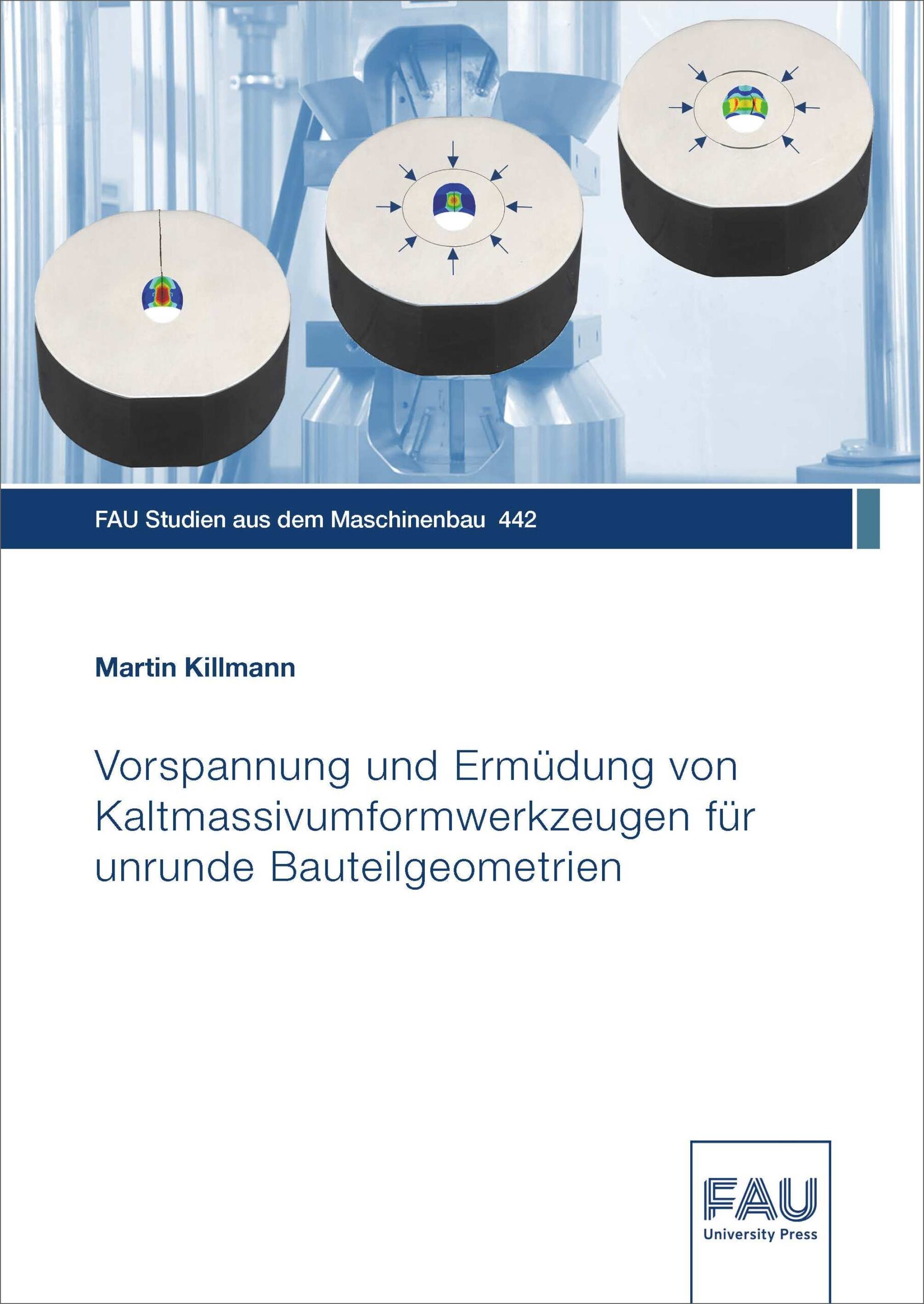Description
Cold forging enables the energy efficient production of high-strength metal parts. However, tool fatigue due to high forming forces impedes the applicability of forging processes for intricate part geometries, which are increasingly in demand. Therefore, tool stresses and fatigue failure in cold forging dies for parts with non-circular symmetrical cross-sections were analyzed depending on their prestressing system. The investigations were carried out using die load simulations and a newly developed fatigue test, in which the forging pressure is applied by cyclic compression of an elastomer specimen. Critical tensile tool loads leading to fatigue failure occur where the inner die contour deviates the most from a circular geometry. While conventional reinforcement systems are able to improve the stress state, fatigue failure still occurred after about 100,000 load cycles. Therefore, adapted prestressing systems using a local reinforcement effect were researched. On the one hand, gaps interrupting the contact between reinforcement and die induce a bending stress and locally increase the prestress in critical areas. On the other hand, stress pins pressed into the die create a local stress field around them and improve the stress state when positioned appropriately. Experimental analyses showed an increased die life of 150% for gaps and 16% for stress pins. These local prestressing systems therefore provide potential for enhancing process limits in cold forging to produce more complex part geometries.


Reviews
There are no reviews yet.